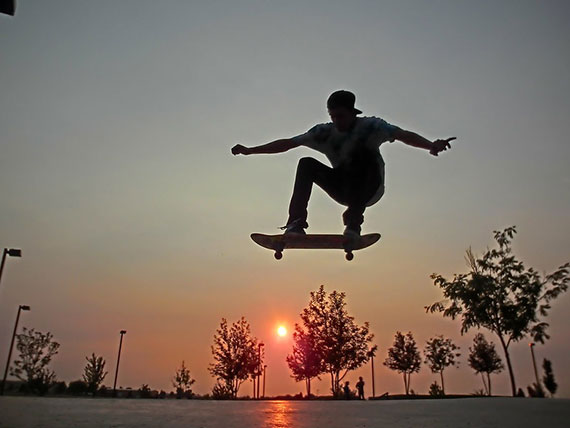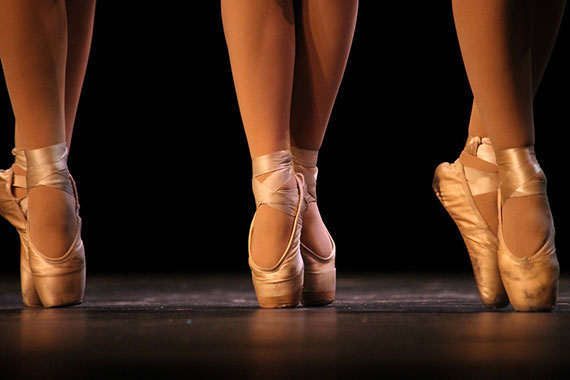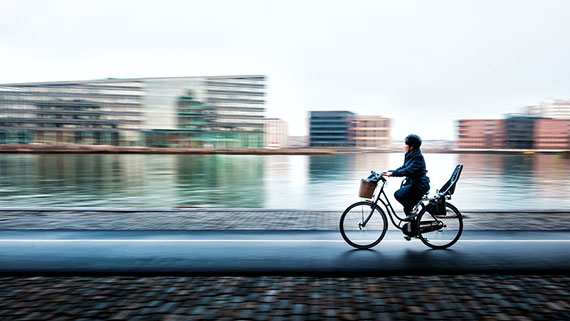Have you ever been browsing through your cameras’ menu and noticed something called ISO and just ignored it because you didn’t know what it was for? Well, in this article we will explain what ISO is and how to use it to your benefit when taking pictures.

Photo by FunGi_ (Trading); ISO 100, f/2.8, 1/1250-second exposure.
ISO is a rating number that indicates how sensitive your cameras’ image sensor is to the available light. Just in case you didn’t know, the image sensor is the device in your camera that gathers the light from a scene when you are taking a picture. Every digital camera has an image sensor and the image sensor is what has replaced film for producing photographic images.
ISO ratings are expressed in numbers such as ISO 100 or ISO 800. When your camera is set to a higher ISO number like ISO 800, less light will be required to obtain a correctly exposed image than when the camera is set to ISO 100.
In short, changing the ISO setting on your camera increases or decreases the image sensors sensitivity and light gathering ability. (by the way, ISO stands for International Standards Organization
How does the ISO setting affect your everyday photography? The ISO setting is directly related to your cameras shutter speed and aperture setting as far as making properly exposed images. The following is an example of a situation when you might need to change your camera ISO setting to get a correctly exposed picture.
Lets say you are trying to take a picture in a low light situation and your camera is set to ISO 100. Lets also assume that using the camera flash is not allowed or it cannot cover the scene being photographed.
Your pictures are coming out too dark because there is not enough light reaching the image sensor. No problem! Try changing the camera ISO setting to ISO 400 or maybe ISO 800 or higher. This will increase the image sensor sensitivity and there is a good chance that you will be able to get a properly exposed image at the higher ISO setting.
The aforementioned example only used changing the ISO setting to resolve the exposure problem. However, the next example involves changing the ISO setting as well as the shutter speed. (Note: compact cameras without manual settings for the camera lens aperture and shutter speed won’t be able to use the next example. Manual adjustments to the shutter speed and camera lens aperture are generally able to be made with digital single lens reflex cameras).

Photo by Judith Garcia; ISO 3200, f/5.6, 1/80-second exposure.
Here is another situation when you might need to change your ISO setting. Once again, lets assume your camera is set at ISO 100. This time your images are properly exposed with a shutter speed of 1/60 second and with your aperture open to its widest setting at f 3.5.
However, the subject you are photographing is moving cars and at the shutter speed of 1/60 second, the images are coming out blurred. (they are blurred because the shutter speed is too slow). The obvious solution might seem to be changing the shutter speed to something faster like 1/250 second. Unfortunately, changing the shutter speed to 1/250 decreases the amount of light reaching the image sensor and makes the image too dark. Also, as previously mentioned, the aperture is at its widest setting and can’t be set to allow any extra light to reach the image sensor.
Once again, the solution is to change the ISO setting. Increasing the ISO setting from ISO 100 to ISO 400 will make the image sensor more sensitive to light. You can then increase the shutter speed to 1/250 which will probably be fast enough to eliminate the blur in the picture while making a correctly exposed picture.
As you can see, the ISO, shutter speed, and aperture setting work together to make correctly exposed pictures. So don’t forget about changing the ISO setting if you are having a difficult time finding the right exposure values.
While increasing the ISO setting can help you get some shots that you might have otherwise missed out on,
there is a down side to using very high ISO number settings. That down side is called digital camera “noise”. This noise is what appears as little discolored specks in the image. Digital camera noise is much more noticeable when higher ISO numbers like ISO 1600 or more are used. The digital camera noise is also more noticeable in darker areas of the image than in the lighter areas.

Photo by d26b73; ISO 320, 1/8.0, 1/30-second exposure.
Also, compact digital cameras with smaller image sensors will produce more noise in an image than Digital SLR cameras with larger image sensors.
However, don’t be afraid to increase your ISO to a high number if that is the only way you can get the best exposure. It is always better to get the shot with a little noise in it instead of not taking the shot altogether.
Otherwise try shooting at lower ISO numbers for much crisper and clearer pictures.
About the Author:
Keith Jones writes for easybasicphotography.com. A site geared towards beginners through serious amateurs who want to learn a little more about basic digital photography.
For further training, here is a helpful video on the topic:
This is a brief explanation on how ISO works on a digital camera and what it does.
Like This Article?
Don't Miss The Next One!
Join over 100,000 photographers of all experience levels who receive our free photography tips and articles to stay current:






Keith – a good simple and easy to read article. As Brian indicates, at one time film speed (or sensitivity to light) was based on ASA. This was a simple acronym for the American Standards Association. The standards are now international and based on ISO. However, ISO is actually the shortened name and not an acronym (and therefore should not be pronounced as I-S-O) for the IOS – ie the International Organization for Standardization.
My Thanks to R. Scott Anderson for answering my question about how the sensitivity of the image sensor was changed.
I was envisioning a change in the voltage applied to the sensor or some other electronic parameter.
Does anyone happen to know what the native ISO f a typical sensor is?
Thanks form an old guy who started when ISO was ASA.
NOT TRUE! The sensitivity of a camera’s sensor does NOT change with the change of the ISO setting. The method the camera uses to extrapolate the strength of the signal to be recorded does. Your ENTIRE article is wrong. The sensor in each camera has a native ISO sensitivity that produces a certain signal strength when exposed to a certain amount of light. ISO in FILM did change the sensitivity of the film itself but the solid state sensor of a digital camera as sensitive as it is…no more and no less. The ISO adjustment is determined by the mathematical algorithm the manufacturer installed that multiplies that signal when less light hits the sensor…PERIOD. Even basic reading on the subject should have shown you that. SHAME on you for either your laziness for lacking even BASIC research or for your being CONDESENDING to a novice’s ability to absorb the truth if given the chance to learn it.
@R. Scott Anderson – you’re quite an angry individual, aren’t you? The entire article is not wrong, most of it is devoted to how to get a good shot. And to the layman, and from the user’s perspective, the change in the way the camera extrapolates the data is akin to a change in sensitivity in the sensor. With a film camera the ISO rating would be on the film, with a higher ISO being more sensitive film, so in fact what the modern camera does is replicate the idea of a higher ISO being a more sensitive film – or in this case, sensor.